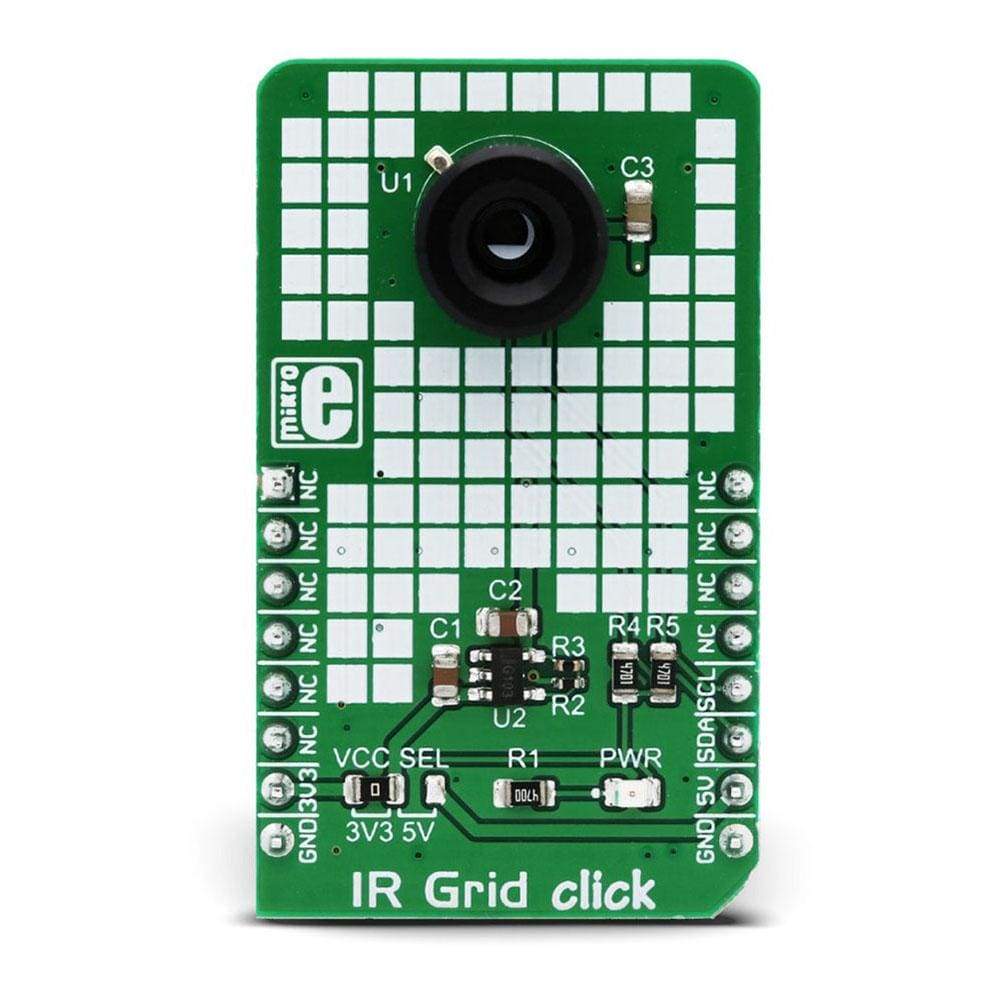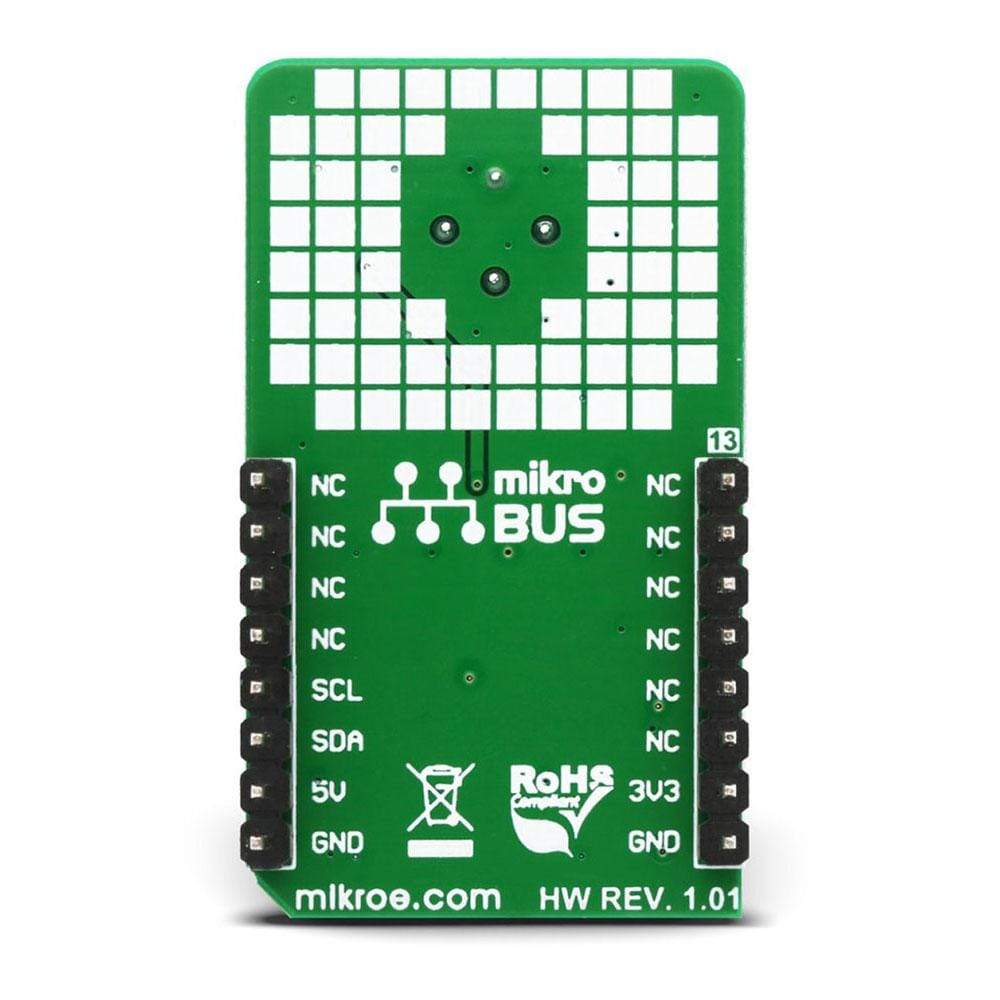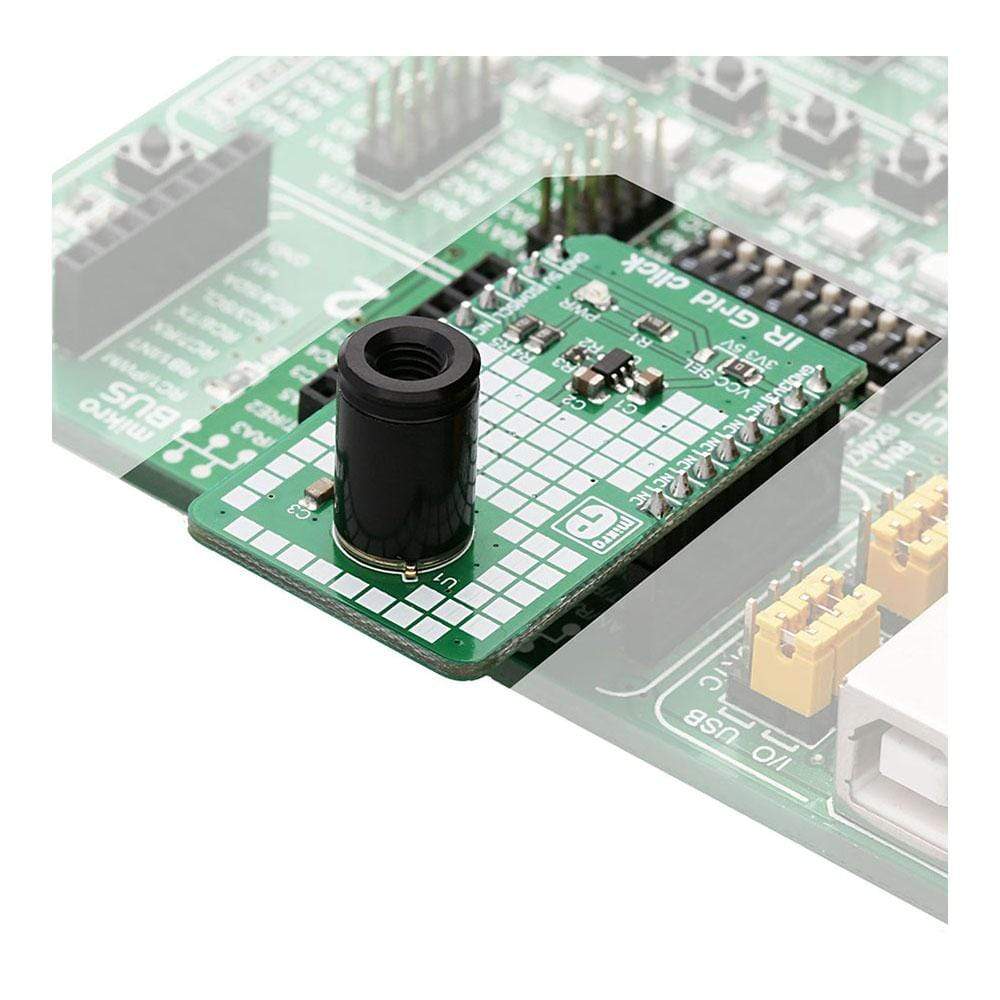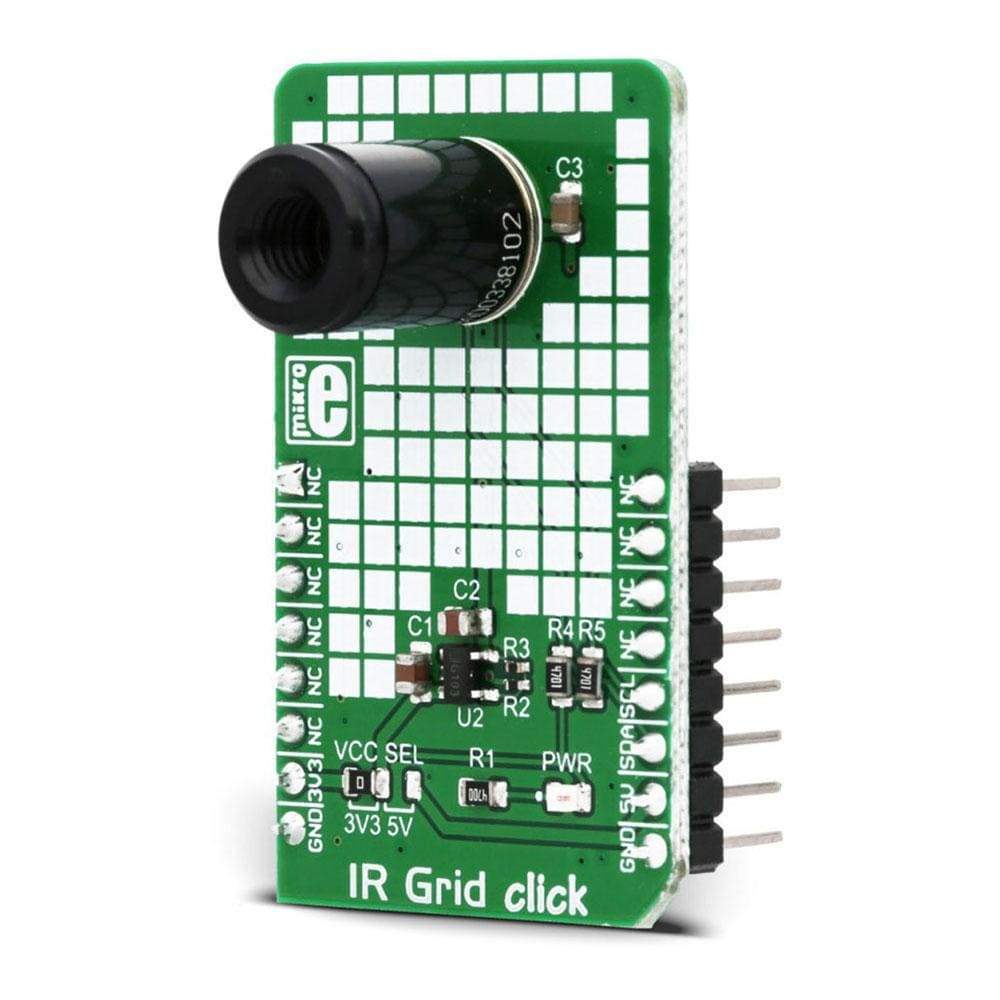
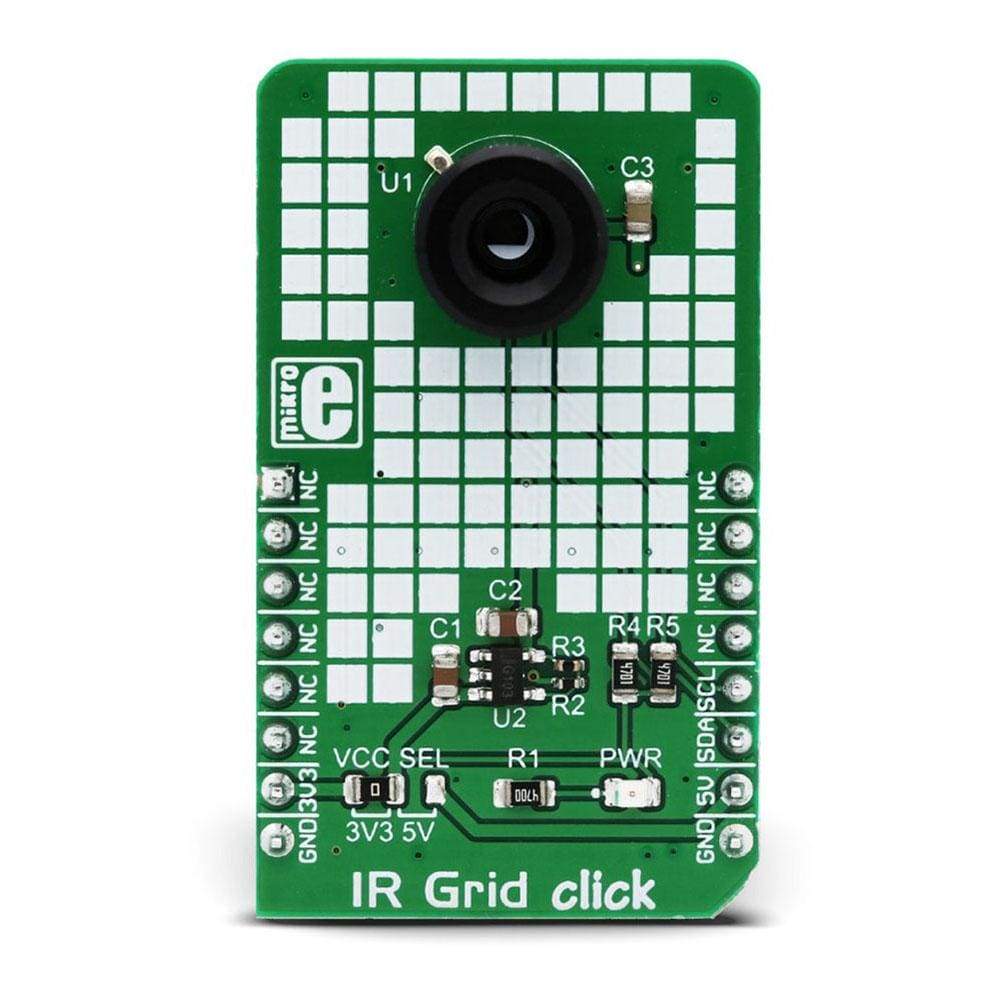
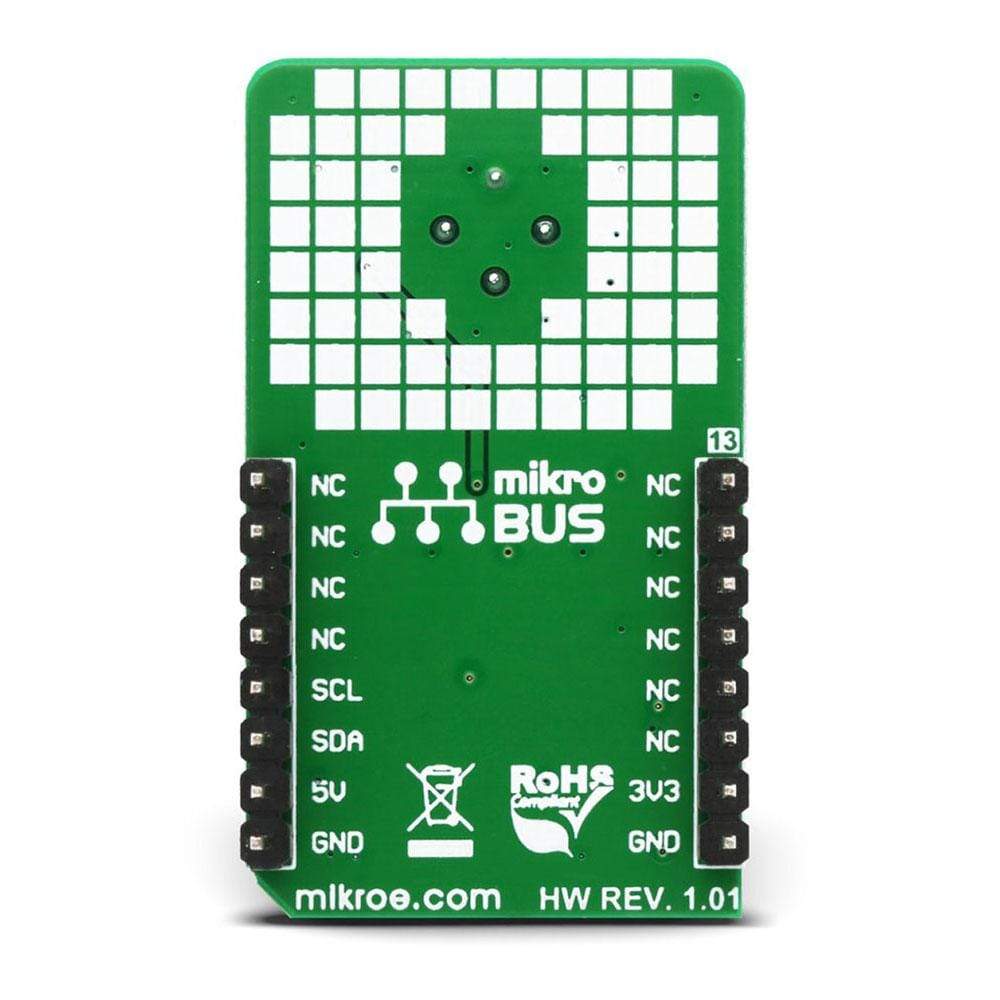
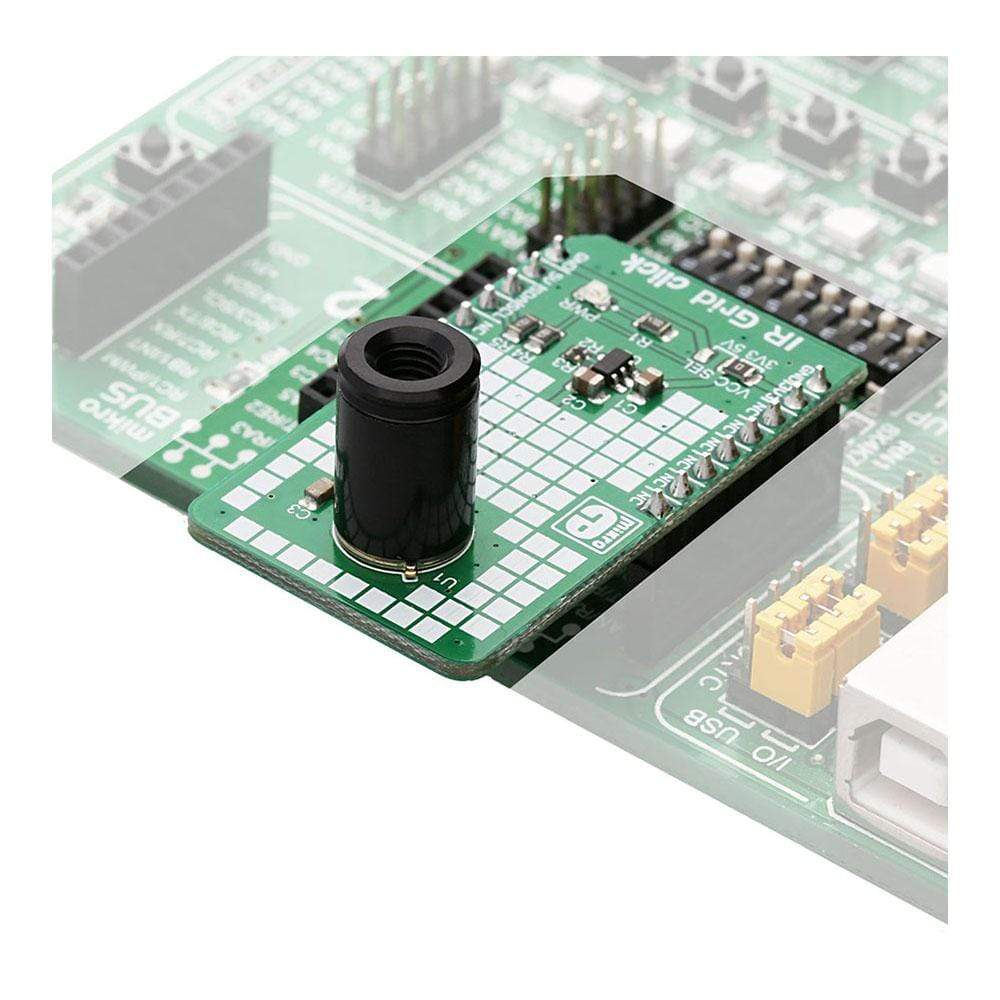
Key Features
Overview
The IR Grid Click Board™ is a thermal imaging sensor. It has an array of 64 very sensitive factory-calibrated IR elements (pixels), arranged in 4 rows of 16 pixels, each measuring an object's temperature up to 300˚C within its local Field of View (FOV). The MLX90621ESF-BAD IR sensor used on this Click Board™ has only four pins, and it is mounted inside of the industry-standard TO39 package. It is equipped with 2Kbit of EEPROM for storing the compensation and calibration parameters. The MLX90621BAD IR sensor array IC has I2C compatible digital interface, allowing it to be interfaced with a wide range of different MCUs.
The sensor used on the IR Grid Click Board™ offers 40&Deg; x 10&Deg; Field of View. The sensor can output up to 512 frames per second (FPS).
Downloads
Das IR Grid Click Board™ ist ein Wärmebildsensor. Es verfügt über ein Array aus 64 sehr empfindlichen, werkseitig kalibrierten IR-Elementen (Pixeln), die in 4 Reihen mit 16 Pixeln angeordnet sind und jeweils die Temperatur eines Objekts bis zu 300 °C innerhalb seines lokalen Sichtfelds (FOV) messen. Der auf diesem Click Board™ verwendete IR-Sensor MLX90621ESF-BAD hat nur vier Pins und ist im Industriestandard-TO39-Gehäuse montiert. Er ist mit 2 Kbit EEPROM zum Speichern der Kompensations- und Kalibrierungsparameter ausgestattet. Der IR-Sensor-Array-IC MLX90621BAD verfügt über eine I2C-kompatible digitale Schnittstelle, sodass er mit einer Vielzahl verschiedener MCUs verbunden werden kann.
Der Sensor auf der IR Grid Click Board™ bietet ein Sichtfeld von 40° x 10°. Der Sensor kann bis zu 512 Bilder pro Sekunde (FPS) ausgeben.
| General Information | |
|---|---|
Part Number (SKU) |
MIKROE-2622
|
Manufacturer |
|
| Physical and Mechanical | |
Weight |
0.021 kg
|
| Other | |
Country of Origin |
|
HS Code Customs Tariff code
|
|
EAN |
8606018713158
|
Warranty |
|
Frequently Asked Questions
Have a Question?
Be the first to ask a question about this.


